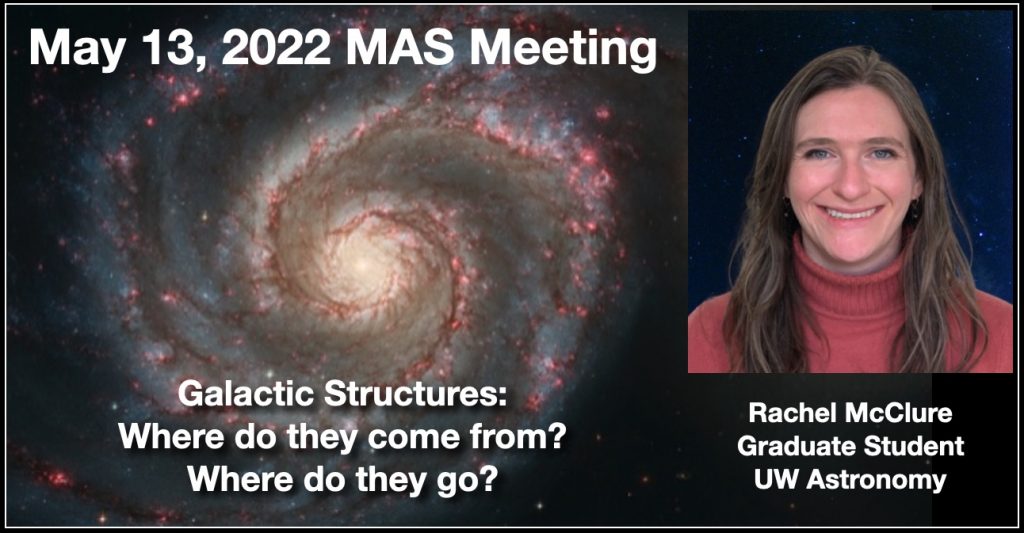Galactic Structures: Where do they come from? Where do they go?

Our observations of galaxies, from nearby to the edges of the observable universe, reveal striking diversity of size, environment, composition, and apparent structure. Ranging from the clumpy irregulars, through the massive round ellipticals, to the coherent disks — probing the mechanisms responsible for these formations in nature requires a wide range of investigative tools from theoretical observations to detailed spectroscopic observations. Barred spirals comprise >50% of the observed population of nearby disk galaxies yet the physical mechanisms that create and sustain these features are not well understood despite persistent study for nearly 200 years. In this talk, we will take a tour through the features that populate our local galaxies, explore their dynamical origins, and dive into some forthcoming results on bar supporting orbital populations.
Rachel Lee McClure is a National Research Foundation Graduate Research Fellow in the third year of her PhD at the UW — Madison Astronomy Department in the MadAstroDynamics Group. Her research is an exploration of the formation and maintenance of bars in disk galaxies throughout the universe in collaboration with advisor Prof. Elena D’Onghia. Through her work, McClure characterizes the orbital dynamics of individual stars in large particle number simulations of galaxies to identify observable signatures for investigation with spatially resolved observational surveys of galaxies. Besides research, she is a passionate and dedicated educator focused on building inquiry-based structures into accessible astronomy coursework at the high-school and university level.
This MAS meeting will mark our return to IN-PERSON MEETINGS at Space Place.
